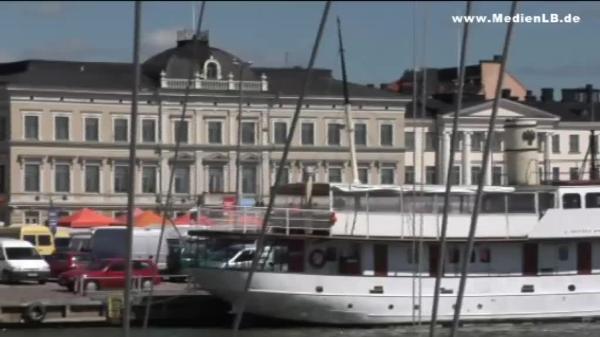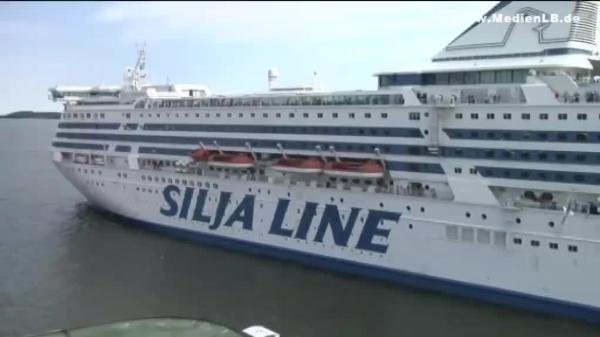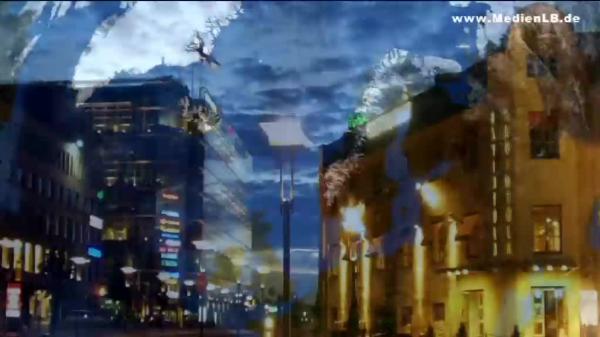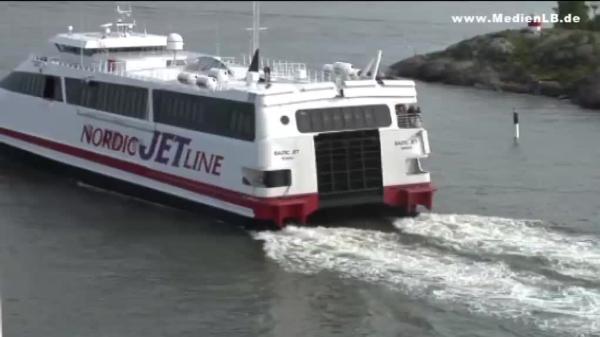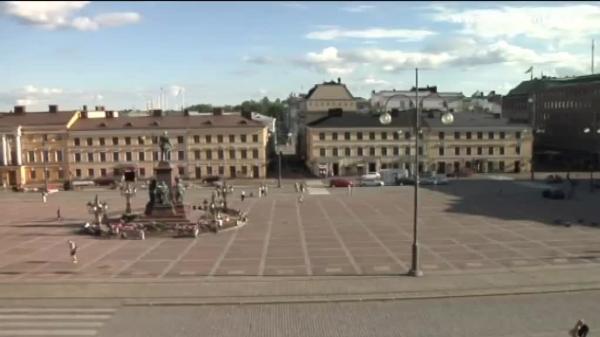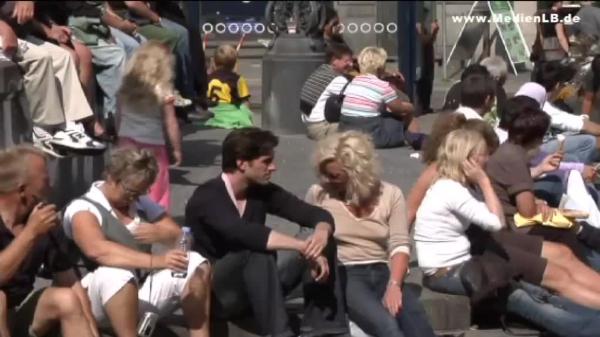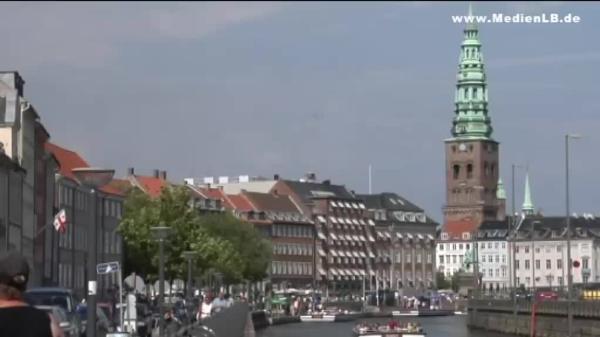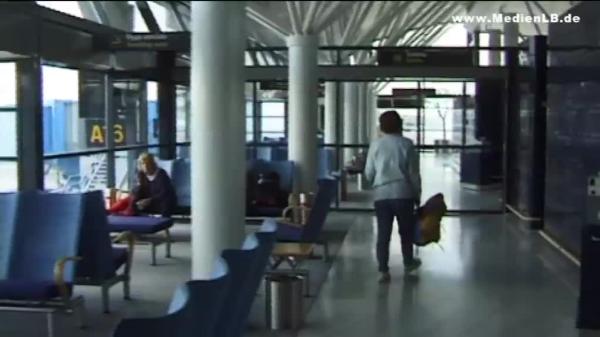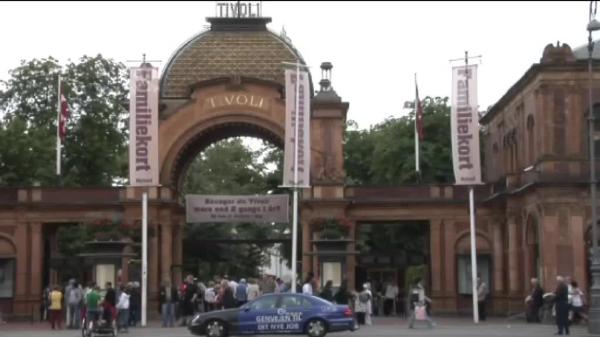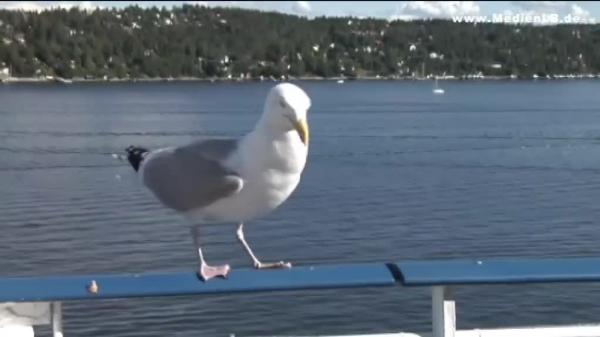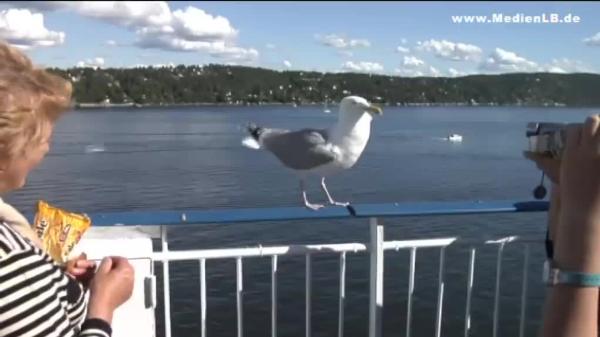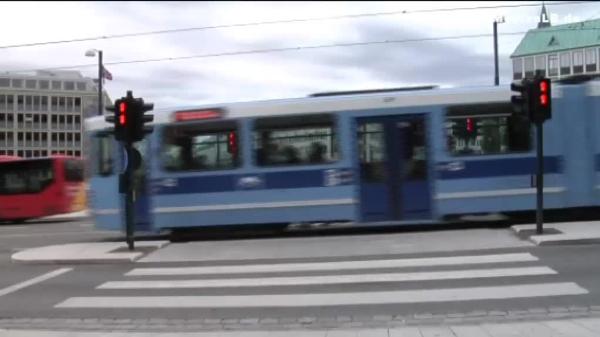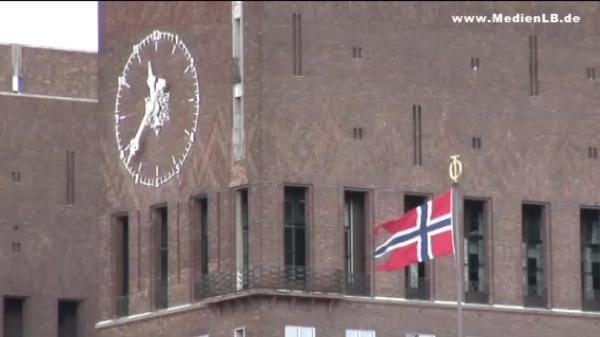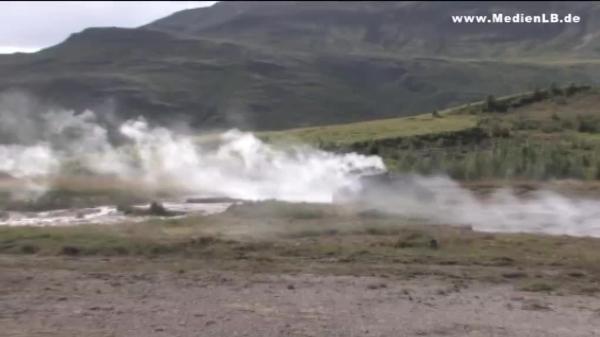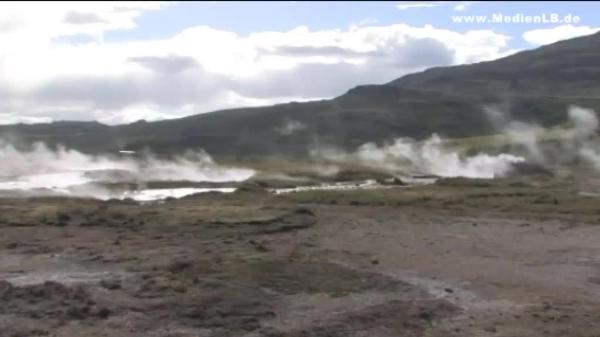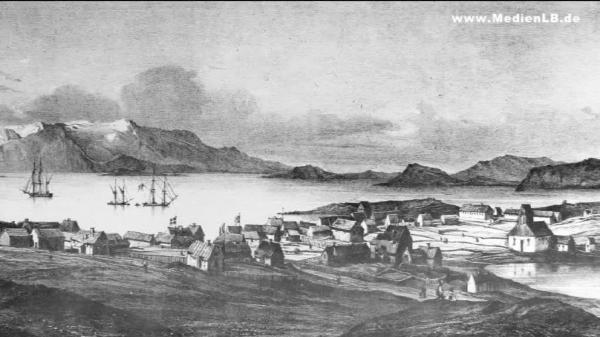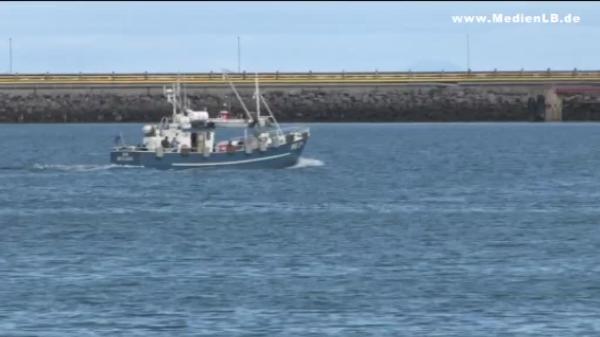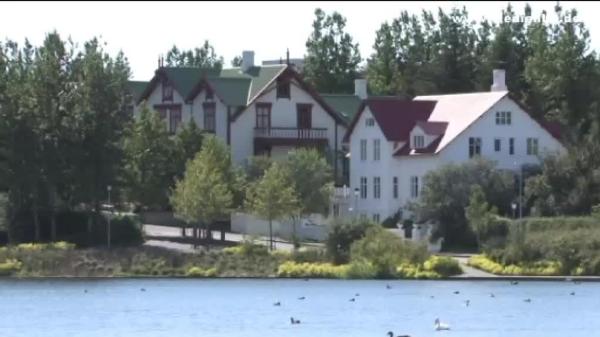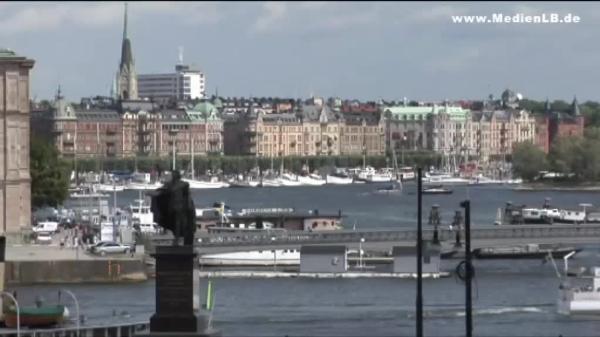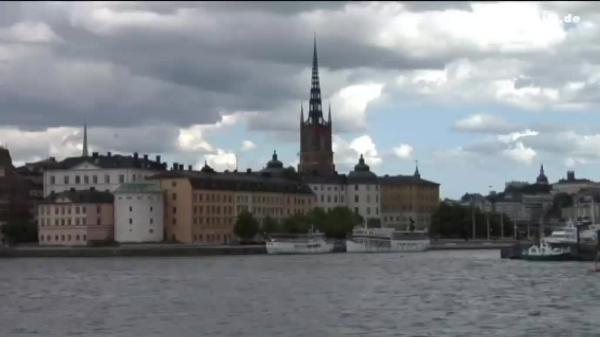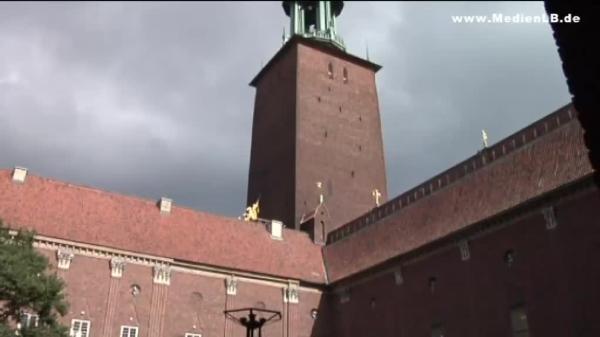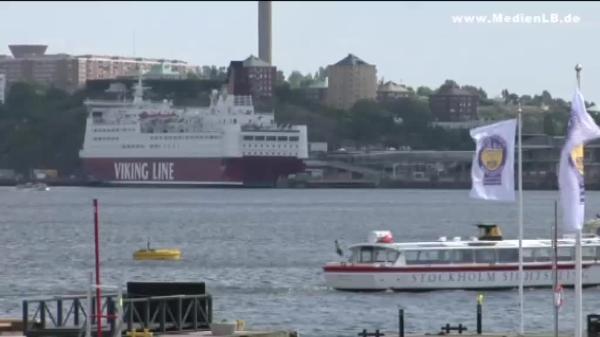Hauptstädte Nordeuropas
Helsinki, Kopenhagen...

Capitals of Northern Europe

Helsinki. Copenhagen, Oslo, Reykjavík, Stockholm 1. Helsinki 1.1 Dates and Facts Winters are long in the - after Reykjavik - northernmost capital of Europe. The pretty epithet 'White City of the North' is not due to the snow, however, but to its impressive, monumental white buildings in the city centre. The ensemble of bright harmonious buildings around the Senate Square is what the traveller coming by ship catches sight of first. After he has passede the ancient fortress of Suomanlinna that watches over the entrance to Helsinki and has been part of the UNESCO world heritage since 1991, the city rises from the waters of the Baltic Sea like a white dream. Helsingfors - the Swedish name of Helsinki - was founded in 1550 on the order of King Gustav Vasa. He wanted to create a port rivalling the economically strong Hanseatic city of Reval on the other side of the Gulf of Bothnia. Today Reval is called Tallinn and is the capital of Estonia. Helsinki is not only the capital of Finland and the Finnish landscape of Uusimaa. With about 562.000 inhabitants it is also the biggest city of the country. In the so-called 'catchment area of the capital', the conurbation around Helsinki, there live almost 1.3 million people - that is about a quarter of the total population of Finland. Helsinki is the political, economic, spiritual, scientific and cultural centre of Finland. It is officially bilingual still today - a relic of its century-long dependence on Sweden. Up to 500 of the altogether 686 square kilometres of the territory covered by the city are water! Also 315 skerries, small rocky islands situated off the mainland, count among the 186 square kilometres of it. 1.2 Climate In Helsinki the first snow mostly falls in mid-November. Between the end of December and mid-March the city usually disappears under a permanent blanket of snow. Helsinki is situated at the same latitude as the southern part of Alaska and the southern tip of Greenland. Although the capital of Finland is located in the south of the country and thus still clearly south of the polar circle, there are days during the summer solstice, when it hardly grows dark at all. In winter, the days grow extremely short, compared to Central Europe. 1.3 Traffic and Economy Helsinki has at its disposal the biggest port for goods and passenger transport in all Finland. About 200 cruise liners put into port during the summer season. They take an average of 150.000 day tourists to the capital. Stockholm in Sweden and Tallinn in Estonia can be reached by regular ferryboat service from the harbour. As the biggest terminal in Finland also Helsinki central station is of significance for transportation. Within the city area public transport is available, for example underground trains, tramways, busses and ferryboats. The region of Helsinki produces about one third of the gross domestic product of all Finland. Most Finnish companies and the regional deparments of international firms have their headquarters in the conurbation of the capital. Also Nokia, the well-known cell-phone producer, has settled here. 1.4 Sights and Culture The centrepiece of the Finnish capital is the Senate Square with its bright classical buildings. After Tsar Alexander I declared Helsinki capital of the grand principality of Finland, he ordered the architect of German origin Carl Ludwig Engel to build the city centre. The latter designed a public square around which the most important institutions were assembled. The main university building and the university library line the square on one side, the presidential palace on the other. The dominating monument, however, is the sumptuous Lutheran cathedral with its green-golden dome at the northern end of the square. The steps leading to its portal are mostly crowded by locals and tourists eager to catch a ray of sunshine. Other architectural epochs represented in Helsinki are for example Art Nouveau - the central station is the most famous example - or local Romanticism like here the Finnish National Museum. The famous Finnish architect Alvar Aalto was often the creator of functionalistic buildings. He designed for example the Finlandia Hall, a building for concerts and congresses completed in 1971. Here for example the first CSCE conference was held which ended with the ratification of the 'Final Communiqué of Helsinki'. At the end of the street, directly at the southern harbour is the market place - Kauppatori At the edge of the square, in the middle of a fountain, there is the sculpture of the Havis Amanda - a mermaid of bronze. As a daughter of the sea she personifies the soul of Helsinki. With its Olympic stadium Helsinki has one of the biggest sports arenas of the country at its disposal. It was built for the Olympic Summer Games in 1952. In front of the stadium there is the statue of the Finnish runner Paavo Nurmi. With nine gold medals at Olympic Games, he has been one of the most successful track and field athletes of all times up to now. The Uspenski cathedral is the biggest Russian-Orthodox church in Western Europe. Its building in the Russian-Byzantine style was completed in 1868. Another magnet for visitors among the churches is the modern Temppeliaukio church in the district of Töölö. This house of God was built into a granite rock in 1969. In the district of Taka-Töölö there is also the Sibelius Park. The monument there was put up in honour of the famous composer Jan Sibelius from more than 600 steel pipes. InTöölö there is also the most important opera house of Finland, the National Opera. In the colossal parliamentary building in the centre of the city the Finnish parliament has its meetings. Like, for example, the Swedish one, it consists only of one chamber. The Finnish national theatre was the first to perform plays in the Finnish language. Since 1902 it has been housed in an Art Nouveau building at the station square. Helsinki is a modern city full of life, traditional and modern architecture and a youthful life style. Although it is very young compared to the other metropolises of the North - it was founded only at the end of the Middle Ages after all - it is their equal in every way. 2. Copenhagen 2.1 Dates and Facts About 504.000 people live in Copenhagen today, it is the capital of Denmark and counts among the most important metropolises of Northern Europe. But all this started very small. The first settlement was founded when in the 12th century a fortress was built at the Oresund, safeguarding a trading port. 'Merchants' port' is the meaning of the original name Kopmannaehafn. In 1254 the young Copenhagen got its first town charter. The major part of the city is situated on Seeland, the biggest island of Denmark, not far from the Swedish Malmö; a small part of it extends to the island of Amager. 2.2 Traffic and Economy Although Copenhagen is situated on the coast and not in the centre of Denmark, it is the most important traffic junction of the country. All big roads and railway lines converge here in a star-shaped network. A system of local trains links the city to its suburbs. Moreover, in 2002 the modern underground was inaugurated. In Kastrup, 10 kilometres east of Copenhagen, there is the international airport of the city, offering direct connections to four continents. As a significant part of the import and export trade, the harbour of Copenhagen is of great national importance. It can be reached by ferry from Poland and Norway. A new ship terminal in the north harbour serves both regular service ships and cruise liners. In the inner harbour the harbour bus and passenger boats link, among other things, the opera to the old city centre opposite. In summer, moreover, sight seeing tours on pleasure boats are very popular. Since 2000 Denmark has been linked to Sweden by the so-called Oresund connection - a sixteen-kilometre-long bridge crossing the straits. Both cars and trains go between Copenhagen on the one side and Malmö on the other. 2.3 Sights and Culture Not far outside the city is its emblem, the world-famous Little Mermaid. In Danish she is called lille havfrue. With her the Copenhagen sculptor Edvard Eriksen created the embodyment of the eponymous heroine of a famous fairy tale by the Dane Hans Christian Andersen. She is the most modest of all tourist magnets of the city. Opposite the central station extends the Tivoli, one of the oldest amusement parks of the world. It is the most visited attraction of Denmark, - for no mundane amusements are offered, but real culture is very much alive there. Along the boundary of the park there is the Hans Christian Andersen boulevard, where also the city hall is located. It is decorated with many golden sculptures and was built between 1892 and 1905 in the style of Italian and Norman renaissance. With its 113 metres the city hall tower is the highest tower of Denmark. The Church of Our Lady is a masterpiece of classical architecture. Its architect Christian Frederik Hansen designed the building, the sculptor Bertel Thorvaldsen added numerous statues, among them his Resurrected Christ - a well-known and often reproduced work of art. With Stroget the Danish capital possesses one of the most famous shopping miles of Europe. Together with the rest of the sprawling pedestrian precinct of Copenhagen, to which also the equally famous shopping street Straedet belongs, it attracts locals as well as visitors. In close vicinity to the pedestrian precincts, there is another attraction of the city: the palace of Christiansborg. Since 1918 it has been the seat of 'Folketing', the parliament, and is situated exactly on the spot where in 1167 the first castle of Copenhagen had been built. In the present palace you can still find elements of various preceding castles, which provide the complex with an interesting mixture of styles. Next to the palace there is the Copenhagen stock exchange. The outstanding feature of the imposing, long building is its characteristic tower. Four intertwined dragon tails form its top. The completion of the renaissance monument on the palace island took 21 years. Southeast of the city centre there is Christianshavn. Here two aspects dominate the picture: first of all the district is located on an artificial island. Secondly the houses are not only separated by streets, but also by canals. The waterways have been preserved since the 17th century. Here ships are anchored as close together as cars are parked in other places. With its height of 84 metres and a high dome reminiscent of St.Peter's in Rome, the Frederikschurch is one of the biggest in Europe. It is also called 'marble church', although it was not built of this expensive Italian stone. Original plans of a magnificent building of marble were never realized for financial reasons. Close to the church there is the palace of Amalienborg. For centuries it has been the residence of the Royal family. Two of the four palaces facing each other are the residence of Queen Margaret II and Crown Prince Frederik. The centre of the large, octagonal palace square is adorned by the equestrian statue of Frederik V. On the island of Holmen, opposite Amalienborg, there is the modern opera house of Copenhagen. The building was donated to the Danish state in August 2000 and it has one of the most modern stages in the world. As the southernmost capital of Northern Europe Copenhagen, the city of canals and marvellous old as well as modern buildings, represents a dignified gate to Scandinavia. 3. Oslo 3.1 Dates and Facts In summer, offices close early in the Norwegian capital. Then everybody hurries out of the city as fast as possible to their secluded summer cottages. Many possess one, but secretly dream of their own island. If you approach Oslo by boat through the 100-kilometre-long Oslo fjord, you can see hundreds of them jutting out of the water. They are dotted with multi-coloured cottages. Olso is the captial of Norway and has about 550.000 inhabitants. It is an uncomplicated city,clear and simple, just like the character of the country, which consists to 75% of rocks, lakes and glaciers. According to the latest research, already in about 1000 A.D. a settlement must have existed where Oslo is situated today. Based on this assumption the millennial anniversary of Oslo was celebrated in the year 2000. After the young town was made a bishopric very soon, it quickly increased in importance. In 1299 the king of those days had his residence removed to the place and the fortress of Akershus was built. From the 17th century on Oslo was called Christiana - the Danish King Christian IV, who rebuilt it after a fire, called it after himself. Only centuries later, in 1924, after Norway had seceded from Sweden, and when Christiana had already been captial of the country for decades, it got back its former name. In front of both the city hall and the train station sculptures of tigers remind of another name of Oslo: Tigerstaden ( in English: city of tigers). In 1870 Bjonstjerne Bjornson used the term of affection in a poem in which he describes Oslo as a dangerous and merciless city. Meanwhile, the name has long lost its negative overtones. The municipal coat of arms, at first glance quite unusual, shows St.Halvard. He had tried to protect a woman from brutal thugs and was pierced with arrows by them and drowned weighed down with a millstone. 3.2 Traffic As usual with cities the airport Oslo- Gardermoen is situated out of town, about 50 kilometres north of the city zone. It is the main airport of Norway and can be reached by bus or train from the capital. Local public transport in Oslo consists of a net of underground lines, tramways and bus routes. Sweden can be reached by international railway: there are regular trains to Göteborg and Stockholm. There are ferry services especially to Germany and Denmark. 3.3 Sights and Culture For almost two decades, in the 1930s and 40s Oslo built its brick city hall, the biggest and most extravagant of Scandinavia. Even today the expenditure is only talked about surreptitiously. As far as the result is concerned, opinions are divided - residents of Oslo assure, however, that they have got used to it. Because of its extraordianry architecture, the city hall is one of the emblems of the city anyway. The massive building consists of a central complex and two towers. Here every year on the anniversary of Alfred Nobel's death the Nobel Peace Prize is solemnly awarded. In 1952 the VIth Olympic Winter Games were held in Oslo - for the first time in a Scandinavian country. One of the main venues was the ski jump of Holmenkollen, the oldest of its kind in the world. Since 1892 competitions have been held here. With more than 1 million visitors every year it is one of the highlights for tourists in Norway today. In close vicinity to the city hall - on the left shore of the harbour bay - rises the fortress of Akershus . Since 1304 it served as a castle and later, in the 17th century, it was rebuilt as a renaissance palace. Around the station the more recent architecture of the city can be found: ultra-modern office complexes conjure up the typical city aura. One of the most famous Norwegian artists was the painter Edvard Munch. Today he is regarded as one of the pioneers of expressionism. In the Munch museum and Munch house in Oslo many of his paintings can be seen, together with works from the painter's estate - his legacy to his hometown. Another famous artist from Oslo is the sculptor Gustav Vigeland. Dozens of his statues can be visited in the Frogner Park, a 30-hectare green space in the centre of Oslo. Vigeland's work has introduced art into the most frequented recreation area of the city. The Karl Johans gate is doubtlessly the main artery of the city. Formerly conceived as a magnificent boulevard, it leads from the station to the Royal palace over a distance of two kilometres. An abundance of shopping arcades, restaurants and hotels can be found here. The promenade also leads you to the Stortinget.The neo-gothic brick building, constructed in 1866, houses the Storting, which means literally translated about 'great meeting'. It is the national parliament of Norway. The Royal palace is situated at the north western end of the Karl Johans gate. Incidentally, the King of Norway has no intention of keeping his citzens away from his home! The park of his residence has no paling, everyone can go for a walk there. The biggest and most important theatre of Norway is the Oslo National Theatre. The statue taking up the place of honour in front of the theatre represents Henrik Ibsen, the best-known Norwegian writer. Especially productions of his works have earned the theatre considerable international renown. With about 30.000 students Oslo is the most important university town of the country. The university was built in 1811, modelled on the Humboldt University in Berlin. Oslo is uncomplicated, calm, discreet and tolerant. But when a tremendous mood suddenly springs up under the clock tower on the busy waterfront, on beautiful summer evenings, and young and old start dancing spontaneously to lively music, you realize that here, too, people may bubble over with zest for life. 4. Reykjavík 4.1 Dates and Facts According to saga the Norwegian Viking Ingólfur Arnarson, following the custom of his people, when approaching Iceland threw his highchair over board. The bay where the pieces of wood thrown into the sea were washed ashore was settled - the gods had chosen the place for his new home. That was in 874 A.D. Because of the clouds of steam rising in the bay, Arnarson called it 'bay of smoke' - in Icelandic Reykjavik. That is what the Old Icelandic Landnámabók, the book of land acquisition, tells. Today a statue of the Viking stands in Reykjavík and looks towards the harbour. Also the modern sculpture of Sólfar - which means 'Sun Traveller' - reminds of the origins of the town: it is situated on the shore of the bay and represents a Viking ship. On 1st December 1918 Iceland was declared a kingdom with Reykjavík as its official capital and thus the northernmost capital in the world. After the proclamation of the Republic of Iceland on 17th June 1944 in Dingvellir, it finally became the capital of an independent country, too. Today Reykjavík has 117,000 inhabitants - that is more than one third of the total population of the country - and is situated in the southwest of the island, at the beginning of the Reykjanes peninsula. The zone of plate tectonic shifts, that is the area where the Eurasian and North American plates collide, crosses Iceland from southwest to northeast. It reaches also across the peninsula of Reykjanes. That is why there are earthquakes time and again, causing little damage, though. 4.2 Culture and Sights Right through the centre of Reykjavík goes the Laugavegur - the 'Way of Sources'. Its name dates back to the time when Reykjavík was still a village: then there was a small valley three kilometres outside the centre, the Laugardalur, where hot springs surged up from the earth. The 'Way of Sources' led there from the village and the inhabitants used it regularly to do their washing and to bathe. Today the old Laugavegur is the main shopping street of the city. Here numerous cafés, restaurants, fashion boutiques, art galeries , bars and souvenir shops can be found. One of the oldest buildings of the city is the cathedral ( in Icelandic: Dómkirkjan) in the town centre. At its consecration in 1796 all inhabitants of the town still found room in the relatively small church. On a hill, visible from afar, the Hallgrímskirkja rises high above the city centre. With its conspicuous tower it can be regarded as one of the emblems of the city. Inside the Protestant church there are elements of gothic style and an impressive organ. In front of the church there is a statue of Leifur Eriksson, the best-known Icelandic discoverer. Around the year 1000 he stepped on North American soil, presumably as the first European - before Christopher Columbus. Also the Háteigskirkja with its four pointed steeples is among the typical sights of the city. With the hot spring water from the surroundings almost the whole town gets heated today. Through a pipeline it is conducted from the boiling interior of the earth directly underneath the living rooms. The sulfurous bathing water smells slightly of rotten eggs, and in old houses steam sometimes rises through cracks in the floor. On the hill of Öskjulid, south of the town centre, rises Perlan - the pearl - the warm water reservoir. Its six tanks contain up to four million liters of warm water each, with temperatures of about 85°C. Because of its elevated position Perlan is able to supply all buildings in Reykjavík with water without any additional pumps. In winter, also the pavements and streets are heated with its hot water. One of the tanks has been drained meanwhile and now houses a small saga museum, a restaurant and shops under a glass cupola. The Althing is the parliament of Iceland. It has its seat in the Albingishúsid in the town centre. Directly behind the parliament, on the lake of Tjörnin, is the new, modern town hall of Reykjavík. The Prime Minister's offices are in this small white building at the Laekjargata. In 1771 it was built originally as a prison. 4.3 Economy and Traffic The harbour of Reykjavík is the only Icelandic harbour to be mostly free of ice and open even in strong winters. This is due to the Gulf Stream, which determines the climate to a large extent. Without its warming effect Iceland would be totally uninhabitable! Fishing and fish processing have always been sources of livelihood for the inhabitants of the area around Reykjavík. In the rounded bay, enclosed by its local mountain Esja, 900 metres high and visible from afar, up to the present day mostly not the view has been enjoyed, but money has been made. In addition there are above all service companies and high-tech industries in Reykjavík - among others genetechnological and biotechnological laboratories. The city has well-built roads, even six-lane city motorways and an efficient public transport system. In the streets you can see many cross-country vehicles and high-wheeled jeeps needed for trips into the interior. There is no train station as there is no railway nor tramway on Iceland, because of the danger of earthquakes. An airport for domestic flights is near the Tjörmin. From here also flights to Greenland are handled. 50 kilometres southwest of Reykjavík, near Keflavík, is the international Leifur Eriksson airport. 4.4 International Life In the 1970s and 80s knowledge of Reykjavík increased more and more all over the world. For example in 1972 the media reported extensively about the Chess World Championship that took place in Reykjavík. The American Bobby Fisher succeeded in defeating Boris Spassky and won the title. In October 1986 Reykjavík was in the centre of world politics: US President Ronald Reagan and the General Secretary of the Communist Party of the Soviet Union, Michail Gorbachev, came to the capital of Iceland for a summit meeting in the Hús Höfdi. The number of people who gradually come to know and love remote Iceland with its capital is steadily increasing. Today Reykjavík is regarded as the up-and-coming and prospering capital of a mysterious and fascinating country. 5. Stockholm 5.1 Dates and Facts 'The city that floats on the water' - thus the famous Swedish writer Selma Lagerlöf characterized Stockholm. In fact, one third of the city area is water. The inner city area extends over 14 islands that are connected to one another by 5 3 bridges. The name, too, is characteristic: stock means 'tree trunk', holm means 'small island'. Stockholm is the biggest city of the Scandinavian peninsula and the capital of Sweden. It is situated on the east coast of the country, where the Mälar Lake joins the Baltic Sea. To the east a bay marks the boundary of the city with numerous coves, spits and about 24.000 bigger and smaller islets, the skerries. This area is also called skerry garden - in Swedish Skärgarden. In the middle of Stockholm the Slussen - the Swedish word for floodgate - separates the freshwater of the Mälar Lake from the salt water of the Baltic Sea. 5.2 Districts and Sights The emblem of Stockholm is its city hall. Enormous costs and the long time of construction of the complex were compensated for by its advancing to the absolute symbol of Stockholm. The imposing 105-metre-high tower, decorated with the Swedish coat of arms Tre Kronor, connects the wings of the building. As Alfred Nobel, creator of the Nobel foundation, was a Swede, every year the formal dinner for the Nobel Prize winners is held here in the Blue Room of the city hall of Stockholm. The major part of the city island is covered by the old town centre of Stockholm, Gamla stan. Many small and steep lanes lead towards the water - a relic from former times: then the water level of the Baltic Sea was higher than today, the houses were directly on the shore. In the Middle Ages the lanes connected the mooring for trading ships with the old town centre. In Gamla stan are the oldest houses of the city, among them several sights. Tyska kyrkan the 'German church' was built in the 17th century by German merchants. The House of Knights - in Swedish: Riddarhuset - is the seat of the Swedish nobility, safekeeping their coat of arms among other things. Storkyrkan is not only the oldest church of the city, but also the cathedral of Stockholm. Here in the Swedish Academy the winners of the Nobel Prize for Literature are chosen. The most impressive part of the old city centre is doubtlessly the Royal palace, in Swedish Kungliga slottet. It has got more than 600 rooms and thus is the biggest palace in the world. Although no longer inhabited by the Royal family, the palace is still the place of work of the king. The Changing of the Palace Guard is still a special tourist attraction. West of the palace there is the isle of Riddarholmen, The church that can be visited there housed the tombs of the Swedish Royal family and other significant personalities for a long time. Moreover, Riddarholmen is the judicial centre of the city today. The parliament building of Stockholm is situated north of Gamla stan, on the small island of Helgeandsholmen. The extensive buildings cover nearly half the island! North of the palace and the parliament building is the district of Norrmalm. It is crossed by the most popular shopping street of Stockholm, the Drottninggatan. Besides this huge shopping mile and for example also the Royal opera, we find the Sergels torg here. The highly modern city square can be recognized especially by its monumental fountain and the imposing obelisks of glass. 5.3 Economy and Traffic As far as traffic is concerned the capital also plays a central role in Sweden. Stockholm is the junction of the Swedish railway net, and Arlanda international airport is situated only about 40 kilometres outside the city. Like all Northern European capitals Stockholm is a seaport, it is even one of the biggest ports of the Baltic Sea. Of particular significance is above all the ferry service with connections to Helsinki, St.Petersburg, Turku, Tallinn and Germany. In addition Stockholm is the biggest business location of Sweden and its service centre number one. Among the most important industrial companies of the region are, for example, Ericsson and Electrolux. The Stockholm stock exchange is the financial centre of Northern Europe and most employees in the region work for banking houses and insurance companies. Stockholm is the capital of a country that has been politically neutral for about 200 years; an old and at the same time modern city; the capital of the most populous northern country - Sweden; and last but not least, the biggest among the Northern European capitals.


